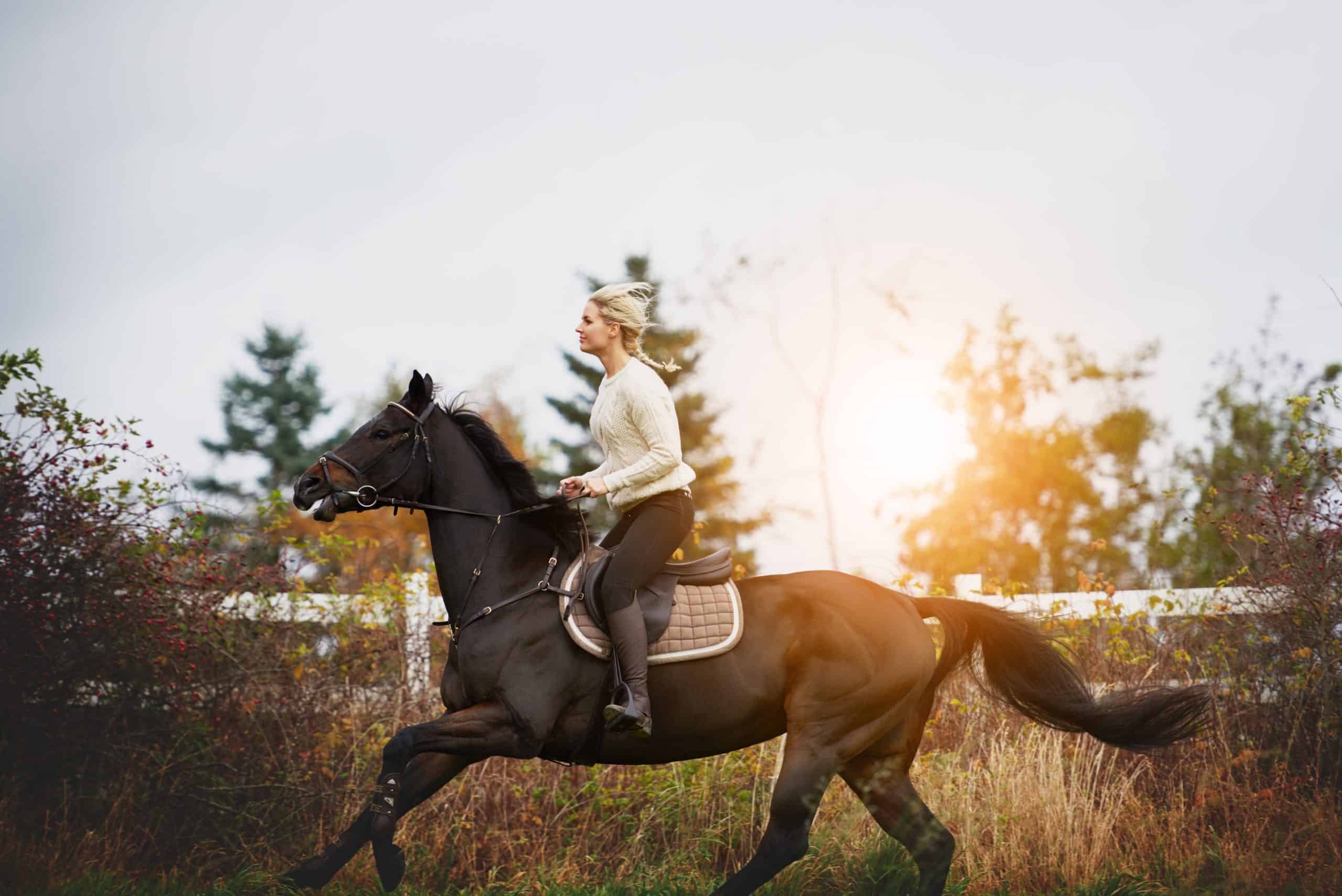Are you looking to build your confidence in horseback riding? Maybe you’ve had a few falls or you’re just starting out and feeling a little nervous. Well, fear not! In this article, we’re going to discuss some tips and tricks to help you boost your confidence in the saddle. Whether you’re a beginner or have been riding for years, there’s always room for improvement and growth. So, let’s dive in and learn how to become a more confident horseback rider!
One of the first things to keep in mind when trying to build confidence in horseback riding is to start with the basics. Take the time to develop a strong foundation and build your skills from there. This means focusing on your balance, posture, and leg position. By mastering these fundamentals, you’ll feel more secure and stable in the saddle. It’s also important to surround yourself with supportive and knowledgeable people who can guide and encourage you on your journey. And don’t forget to practice regularly! The more time you spend in the saddle, the more comfortable and confident you’ll become. In this article, we’ll explore these points in more detail, along with other helpful tips and strategies to boost your confidence in horseback riding. So stay tuned and get ready to take your riding skills to the next level!
How to Build Confidence in Horseback Riding
Horseback riding is a thrilling and rewarding activity that allows you to connect with these magnificent creatures while experiencing the beauty of nature. However, for beginners or riders who have had a negative experience in the past, it can also be a source of anxiety and fear. Building confidence in horseback riding is crucial to fully enjoy and excel in this sport. In this article, we will discuss effective strategies and techniques to help you develop confidence and enhance your skills in horseback riding.
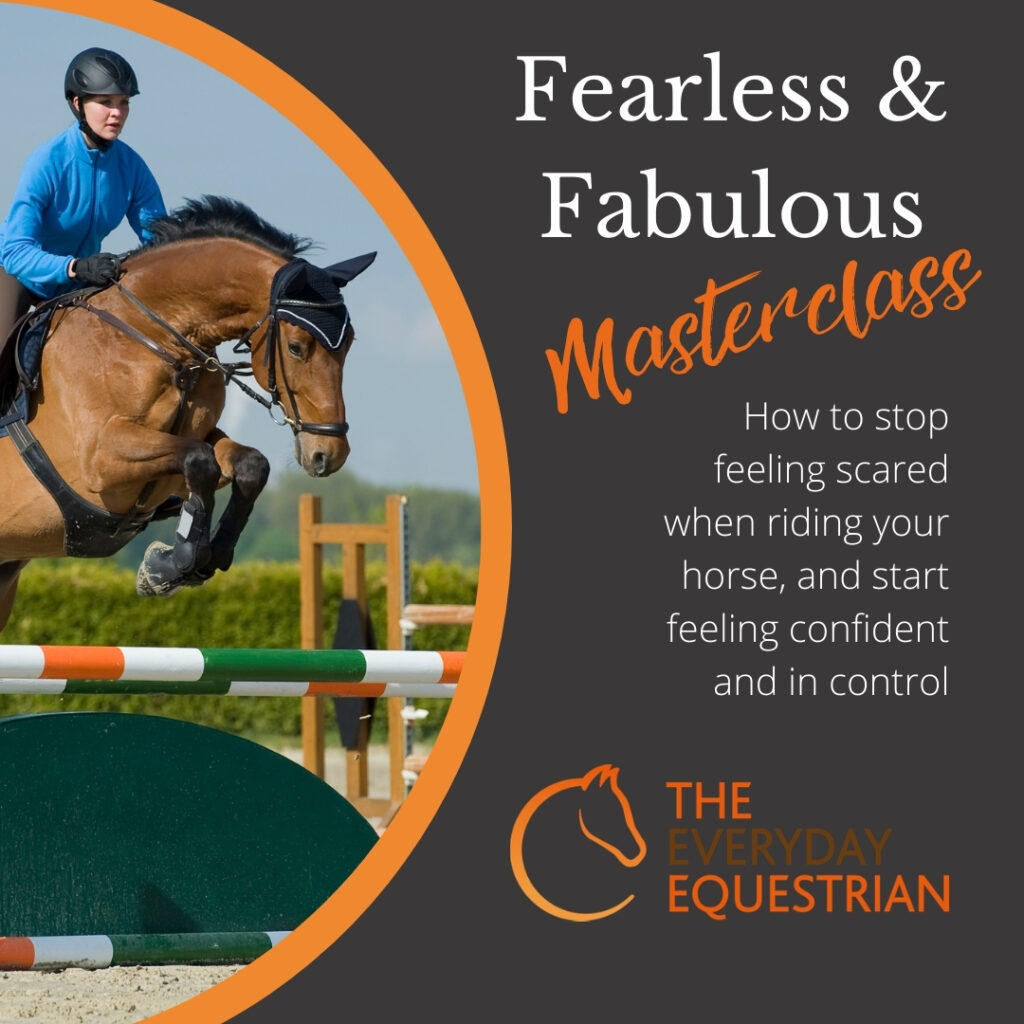
1. Proper Horse Selection
1.1 Choosing the Right Breed
Selecting the right breed of horse is essential to ensure a positive riding experience. Different breeds have distinct temperaments and characteristics that may suit different skill levels and preferences. Do your research and consider factors such as the horse’s size, strength, and energy levels when choosing a breed that matches your skill level and intended riding activities.
1.2 Evaluating Temperament and Skill Level
When selecting a horse, evaluating the temperament and skill level of the horse is crucial. Some horses may be more spirited or energetic, requiring a more experienced rider, while others may be calmer and gentle, making them suitable for beginners. Assessing your own skill level and matching it with the temperament of the horse will create a harmonious partnership and build your confidence in the saddle.
1.3 Considering Size and Conformation
The size and conformation of the horse also play a significant role in your overall riding experience. It is important to choose a horse that is compatible with your own physique and riding goals. A horse that is too large or too small for your body type may cause discomfort and compromise your balance and control. Take the time to find a horse that fits you well to enhance your riding confidence and enjoyment.
2. Essential Riding Gear
2.1 Selecting and Fitting a Helmet
One of the most important pieces of riding gear is a properly fitting helmet. A riding helmet protects your head in case of a fall or accident and should be a non-negotiable part of your riding equipment. Ensure that the helmet is ASTM/SEI certified and fits snugly on your head without excessive movement. A properly fitting helmet will give you peace of mind and boost your confidence while riding.
2.2 Choosing the Right Riding Boots
Investing in a pair of sturdy and comfortable riding boots is essential for safety and control while riding. Riding boots should have a slight heel to prevent your foot from sliding through the stirrup and provide stability while in the saddle. Make sure the boots fit well and provide adequate support to your ankles and lower legs, thus enhancing your confidence and control during your rides.
2.3 Understanding the Importance of Safety Stirrups
Safety stirrups are another crucial piece of riding gear that help prevent your foot from becoming trapped in the event of a fall. These stirrups have a special release mechanism that allows your foot to easily detach from the stirrup when necessary. Using safety stirrups can instill a sense of security and alleviate any potential fear of being caught in the stirrups.

3. Basic Riding Techniques
3.1 Mastering the Correct Riding Position
A strong and correct riding position is the foundation of your riding skills. It ensures stability, balance, and effective communication with the horse. To achieve the correct riding position, focus on aligning your ear, shoulder, hip, and heel in a straight line while relaxing your muscles and maintaining a soft contact with the horse’s mouth. Mastering and maintaining a correct riding position will enhance your confidence and allow you to ride with ease and grace.
3.2 Mastering the Aids: Legs, Seat, and Hands
Developing a solid understanding of the aids is essential in communicating with your horse effectively. The aids include your legs, seat, and hands, which work together to guide and control the horse. Learn how to use your legs to cue the horse for forward, sideways, and slowing down movements. Your seat aids provide balance and rhythm, while your hands communicate with the horse through the reins. Mastering these aids will give you confidence in your ability to guide your horse in different situations.
3.3 Developing Balance and Stability
Building balance and stability in the saddle is crucial for a confident and effective rider. Practice exercises such as riding without stirrups, standing in the stirrups, and performing transitions to strengthen your core muscles and improve your overall balance. By developing a strong and stable position, you will feel more secure and in control while riding, boosting your confidence in the process.
4. Building a Strong Foundation
4.1 Learning Proper Mounting and Dismounting
Learning how to mount and dismount a horse correctly is essential for both your safety and the horse’s welfare. Improper mounting or dismounting can lead to accidents or discomfort for the horse. Take lessons or seek guidance from a qualified instructor to ensure you master the correct techniques for mounting and dismounting, fostering confidence and safety in your riding experience.
4.2 Establishing Effective Communication with the Horse
Clear and effective communication with your horse is key to building trust and confidence. Learn to read your horse’s body language and understand their cues and responses. Practice groundwork exercises that allow you to establish a connection and build a strong relationship with your horse. Strong communication and understanding will create a positive riding experience and enhance your confidence.
4.3 Developing a Solid Control on the Reins
Having a solid control over the reins is important for maintaining balance and guiding your horse. Learn how to hold the reins correctly, using light and steady contact while being responsive to your horse’s movements. Understanding rein aids, such as direct and indirect rein aids, will help you develop a reliable and effective way to communicate with your horse, increasing your confidence in the saddle.
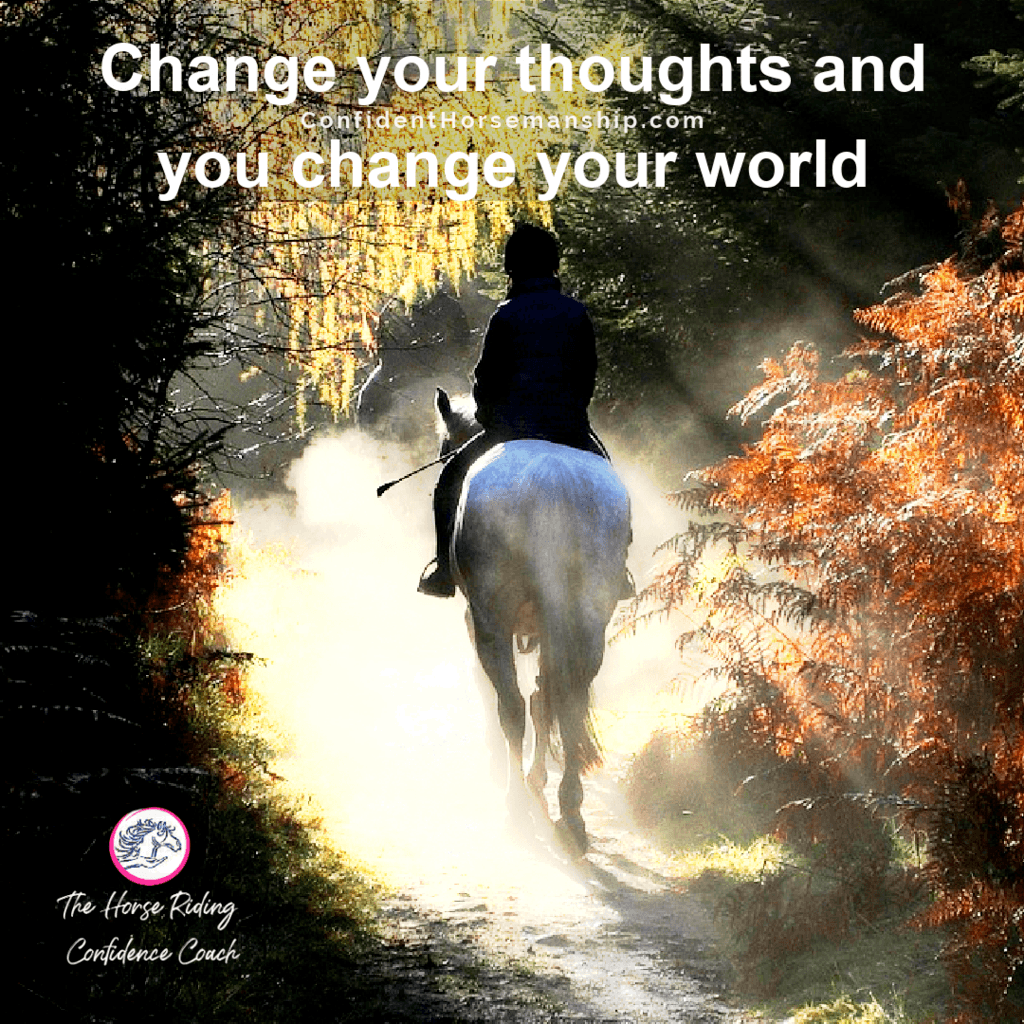
5. Overcoming Fear and Nervousness
5.1 Identifying and Addressing Fear Factors
Fear and nervousness are common obstacles to building confidence in horseback riding. Identify the specific factors that contribute to your fear and work on addressing them. Whether it’s fear of falling, fear of the horse’s size, or fear of losing control, understanding and acknowledging your fears will allow you to implement specific strategies to overcome them.
5.2 Gradual Exposure and Progressive Challenges
Gradually exposing yourself to fearful situations and progressively challenging yourself is an effective way to overcome fear and build confidence. Start with small, manageable steps that push you slightly out of your comfort zone, such as riding in a controlled environment or taking short trail rides. As you gain confidence, gradually increase the difficulty and complexity of your rides, thus expanding your comfort zone and boosting your self-assurance.
5.3 Seeking Professional Guidance when Needed
If fear and nervousness persist or become overwhelming, consider seeking professional guidance from a qualified instructor or a therapist specializing in equestrian-related anxieties. They can provide valuable techniques and support to help you overcome your fears and build confidence in horseback riding.
6. Developing Trust and Bond with the Horse
6.1 Understanding Equine Psychology and Behavior
Building trust and developing a bond with your horse requires an understanding of equine psychology and behavior. Learn about a horse’s natural instincts, body language, and herd dynamics to better interpret your horse’s actions and reactions. By developing this understanding, you can create a harmonious partnership based on trust and respect.
6.2 Establishing Mutual Respect and Trust
Trust is a two-way street. It is important to gain the horse’s trust as well as earning their respect. Establish clear boundaries and consistent expectations to create a safe and respectful environment. Engage in activities such as grooming, groundwork, and spending quality time with your horse to develop a deep bond and a mutual trust that will enhance your confidence while riding.
6.3 Engaging in Groundwork and Natural Horsemanship
Groundwork exercises and natural horsemanship techniques provide valuable opportunities to build trust, establish leadership, and reinforce your communication with the horse. Groundwork activities such as lunging, desensitization, and obstacle courses promote trust and respect through clear communication and positive reinforcement. Incorporating groundwork into your training routine will enhance your confidence, and the horse’s trust in your leadership.
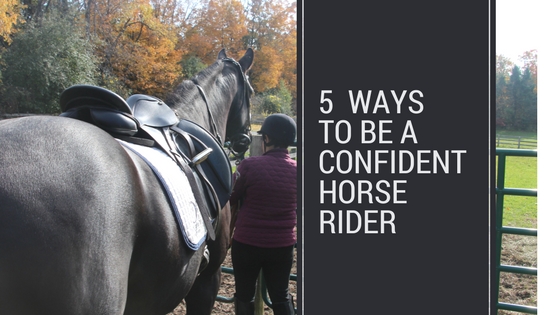
7. Practicing Basic Horseback Riding Skills
7.1 Walking and Trotting Exercises
Practicing basic walking and trotting exercises allows you to refine your riding skills and build confidence in the saddle. Focus on maintaining a steady rhythm and developing a soft and effective connection with the horse through the reins and leg aids. Regular practice of these exercises will improve your overall control and build your confidence in all gaits.
7.2 Mastering the Sitting Trot
The sitting trot is a challenging but essential skill to master. It requires flexibility and balance to move with the horse’s motion while maintaining an independent seat. Practice exercises such as posting trot and sitting trot transitions to improve your sitting trot and develop a secure and confident position in the saddle.
7.3 Transitions, Circles, and Figures
Practicing transitions between gaits, riding circles, and figures is beneficial for both you and your horse. These exercises improve your communication, precision, and balance while engaging the horse’s mind and body. Regular practice of these fundamental riding skills will enhance your control, timing, and overall confidence in riding.
8. Advanced Riding Techniques
8.1 Learning the Canter and Gallop
As you progress in your riding journey, learning the canter and gallop becomes an exciting milestone. These faster gaits require additional control and balance. Seek proper instruction and gradually introduce these gaits in a safe and controlled environment. By mastering the canter and gallop, you will further enhance your confidence and enjoyment in horseback riding.
8.2 Perfecting Half-Halts and Lead Changes
Half-halts and lead changes are advanced riding techniques that refine your communication and control with the horse. Half-halts help rebalance the horse and prepare for transitions or changes in direction, while lead changes demonstrate the horse’s flexibility and responsiveness to your aids. Mastery of these techniques will boost your confidence in working with more advanced maneuvers.
8.3 Incorporating Jumping and Cross-Country Skills
If you are interested in pursuing jumping or cross-country riding, gradually introduce these disciplines into your riding routine under the guidance of an experienced instructor. Start with small jumps or low obstacles and progress at a pace that suits your comfort level. Developing these skills will not only build confidence but also add an element of excitement and adventure to your riding experience.
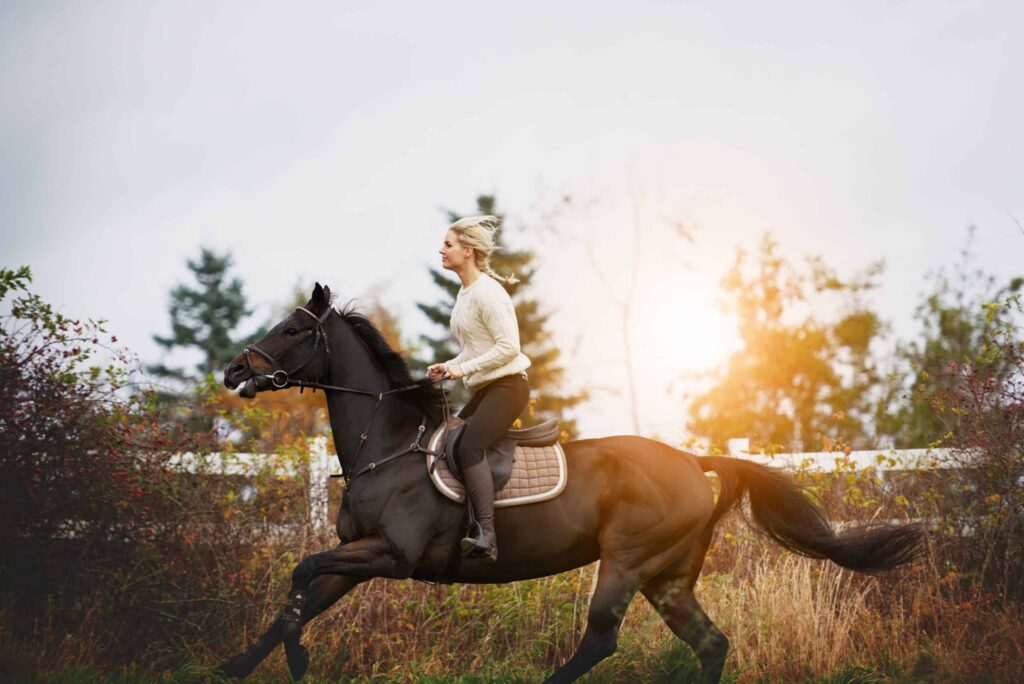
9. Trail Riding and Outdoor Adventures
9.1 Preparing for Trail Rides
Trail riding is a fantastic way to connect with nature and enjoy a scenic ride with your horse. However, it is essential to be prepared and ensure your safety. Plan your trail rides carefully, considering factors such as the terrain, weather conditions, and length of the ride. Bring necessary supplies, such as a first aid kit, water, and a map, and always inform someone about your riding plans for added security and peace of mind.
9.2 Navigating Different Terrains and Obstacles
When trail riding, you may encounter various terrains and obstacles that require careful navigation. Take your horse’s and your own skill level into account, and always prioritize safety. Practice riding over different surfaces such as sand, mud, or uneven ground to familiarize yourself with the challenges they present. Developing the ability to confidently handle these situations will enhance your overall riding skills and self-assurance.
9.3 Safety Tips for Riding in the Wilderness
Riding in the wilderness can be an exhilarating adventure, but it also poses unique risks. Familiarize yourself with local regulations and guidelines for riding in wilderness areas, such as carrying bear spray or knowing how to handle encounters with wildlife. Ride with a buddy whenever possible and inform someone about your riding plans. By adhering to safety precautions and being prepared, you can confidently explore and enjoy the beauty of the wilderness.
10. Understanding Horse Care and Health
10.1 Proper Feeding and Nutrition
Understanding proper feeding and nutrition is essential for maintaining your horse’s health and well-being. Consult with a veterinarian or equine nutritionist to develop a balanced and appropriate diet for your horse’s specific needs. By providing optimal nutrition, you will ensure your horse’s physical and mental well-being, fostering a stronger and more confident partnership.
10.2 Grooming and Bathing Techniques
Regular grooming not only keeps your horse clean but also allows you to develop a deeper bond and understanding of their physical condition. Learn proper grooming techniques to maintain your horse’s coat, mane, and tail, as well as to check for any injuries or abnormalities. Bathing techniques are also valuable in maintaining your horse’s hygiene and overall health. A well-groomed and healthy horse will give you peace of mind and boost your confidence in their well-being.
10.3 Recognizing Common Health Issues
Be knowledgeable about common health issues that horses may experience, such as colic, lameness, or skin conditions. Understand the signs and symptoms of these conditions and know when to seek veterinary care. This knowledge will enable you to promptly address any health concerns and provide appropriate care for your horse, allowing you to ride with confidence knowing your horse is in good health.
11. Competitions and Showmanship
11.1 Participating in Dressage Competitions
Dressage competitions focus on precision, control, and harmony between horse and rider. Participating in dressage tests or shows can be a great way to challenge yourself and showcase your abilities. Familiarize yourself with the different levels and tests, and set achievable goals to work towards. The preparation and dedication required for dressage will not only improve your riding skills but also boost your confidence in a competitive setting.
11.2 Show Jumping and Stadium Riding
Show jumping and stadium riding require a combination of skill, precision, and bravery. These disciplines involve navigating a course of fences or obstacles, emphasizing your ability to guide your horse smoothly and accurately. With the guidance of a qualified instructor, gradually introduce jumping exercises and challenge yourself to overcome higher or more complex obstacles. The thrill of successfully completing a jumping course will undoubtedly enhance your confidence in your riding abilities.
11.3 Improving Horsemanship Skills for Shows
Horsemanship skills go beyond the riding aspect and encompass handling, presentation, and the overall care of your horse. Learn proper showmanship techniques, such as leading, grooming for shows, and presenting your horse in-hand. These skills will not only enhance your performance in competitions but also deepen your bond with your horse and instill a sense of pride and confidence in your abilities as a horseman or horsewoman.
12. Rehabilitation and Training for Horses
12.1 Understanding Rehabilitation Methods
In some cases, horses may require rehabilitation due to injuries or health conditions. Understanding proper rehabilitation methods is crucial to ensure a safe and effective recovery. Consult with a veterinarian or equine rehabilitation specialist to develop an individualized program that includes exercises, therapies, and modalities tailored to your horse’s specific needs. By participating in their recovery, you will strengthen your bond and build confidence in your ability to handle and care for your horse in various situations.
12.2 Conditioning and Strengthening Exercises
Conditioning and strengthening exercises are beneficial for both horse and rider. Gradually introduce exercises such as hill work, pole work, and interval training to improve your horse’s fitness and strength. As your horse becomes fitter, you will feel more confident in their physical abilities and be able to tackle more challenging rides or competitions. Additionally, incorporating exercises that improve your own fitness, such as yoga or Pilates, will enhance your overall riding performance and confidence.
12.3 Training Strategies for Specialized Disciplines
If you have a specific discipline or specialized riding interest, seek guidance from a qualified trainer or instructor who specializes in that area. Whether it’s reining, dressage, endurance riding, or any other discipline, a specialized trainer can provide the necessary training strategies and techniques to develop your skills and confidence in that particular discipline.
13. Maintaining Rider Fitness and Wellness
13.1 Developing Core Strength and Flexibility
Maintaining rider fitness is essential for optimum performance and confidence in horseback riding. Focus on exercises that develop core strength and flexibility, such as Pilates or yoga. A strong core improves your balance, stability, and overall posture in the saddle, while flexibility allows you to move with the horse’s motion comfortably. By prioritizing your own fitness, you will feel more secure and confident while riding.
13.2 Cross-Training and Cardiovascular Exercises
Cross-training and cardiovascular exercises are valuable additions to your fitness routine as a rider. Engage in activities such as swimming, cycling, or running to improve your cardiovascular endurance, stamina, and overall fitness level. By maintaining good cardiovascular health, you can ride longer without fatigue, increasing your confidence and enjoyment in the sport.
13.3 Preventing and Managing Riding Injuries
While riding injuries cannot always be completely prevented, taking appropriate precautions can minimize the risk. Always wear proper safety gear, such as a helmet and protective vest, and learn how to fall safely. Incorporate stretching and warm-up exercises before riding to prepare your muscles and joints. Pay attention to your body, and if you experience any pain or discomfort, address it promptly to prevent further injury. By proactively managing and preventing injuries, you will maintain your physical and mental well-being, allowing you to ride with confidence.
Conclusion
Building confidence in horseback riding is a journey that requires patience, perseverance, and a commitment to continuous learning and growth. By selecting the right horse, practicing essential riding techniques, and gradually challenging yourself, you can overcome fear and develop a strong foundation in horseback riding. Building a trust-based partnership with your horse, engaging in various riding disciplines, and prioritizing rider fitness and wellness will ultimately enhance your confidence and enjoyment in the saddle. Remember, building confidence comes from within, and with dedication and the right mindset, you can become a proficient and self-assured horseback rider.
This article on how to build confidence in horseback riding is intended to provide guidance and support to individuals interested in improving their riding skills. Always consult with a qualified instructor or professional in the field for personalized advice and instruction based on your specific needs and circumstances.
Visit horsebackridingdude.com for more articles and resources on horseback riding.
